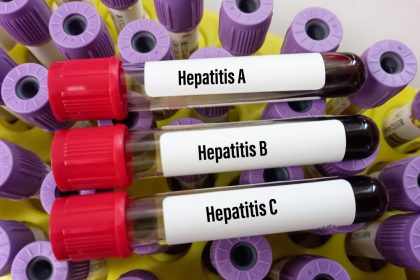That inevitability of growing older might not be as fixed as we once believed. Emerging research has begun challenging our most fundamental assumptions about aging, revealing that cellular deterioration may be far more malleable than previously thought. Scientists have identified specific biological mechanisms that drive aging at the cellular level and, more remarkably, discovered ways to potentially slow, stop, or even reverse these processes.
While complete age reversal remains beyond current capabilities, the boundary between science fiction and legitimate research has shifted dramatically in recent years. Understanding these breakthroughs could transform how we approach aging, potentially offering pathways to extend not just lifespan but also the vital “healthspan” years of active, disease-free living. The new science of cellular rejuvenation suggests we may have more control over our biological age than anyone imagined possible just a decade ago.
The aging clocks inside your cells
Several distinct biological mechanisms function as internal timekeepers that regulate the aging process, creating targets for potential intervention. Understanding these cellular clocks reveals why aging might be more modifiable than previously believed.
Telomere shortening represents one of the most well-studied aging mechanisms. These protective caps on chromosome ends naturally shorten with each cell division, eventually triggering cellular senescence or death when critically reduced. Researchers have identified enzymes like telomerase that can maintain or extend telomeres, potentially preserving cellular youth. While simple telomere extension alone presents cancer risks, more sophisticated approaches focusing on maintaining healthy telomere function without unchecked lengthening show promise for balanced age management without increasing disease vulnerability.
Epigenetic alterations create another crucial aging clock that may be surprisingly reversible. These chemical modifications to DNA don’t change the genetic code itself but influence which genes activate, essentially determining how cells interpret their genetic instructions. The pattern of these modifications changes predictably with age, allowing scientists to measure “epigenetic age” with remarkable accuracy. More importantly, recent research demonstrates that certain interventions can reset these patterns toward more youthful configurations, suggesting that this biological clock might be somewhat rewindable rather than moving inexorably forward.
Mitochondrial dysfunction progressively develops as these cellular powerhouses accumulate damage over time. The resulting energy production decline contributes to numerous aspects of aging, from reduced physical capacity to increased disease vulnerability. New approaches targeting mitochondrial quality control mechanisms have shown surprising ability to rejuvenate these structures, restoring more youthful energy production levels. The discovery that mitochondrial function can be significantly improved even in aged cells challenges previous assumptions about the irreversibility of this aspect of cellular aging.
Cellular senescence occurs when damaged cells enter a zombie-like state, stopping division but remaining metabolically active and secreting inflammatory compounds that harm surrounding tissues. This process increases with age, creating accumulating damage throughout the body. The emerging field of senotherapeutics targets these cells through compounds that either selectively eliminate them or modify their secretion patterns. Early research suggests reducing senescent cell burden can produce remarkable functional improvements and potentially reset certain aging parameters even when intervention begins late in life.
Stem cell exhaustion represents another fundamental aging mechanism as the body’s regenerative capacity declines. Stem cells responsible for tissue repair and renewal gradually lose function with age, limiting the body’s ability to maintain itself. Surprisingly, research indicates this decline stems largely from changes in their regulatory environment rather than intrinsic cellular damage. Interventions that restore more youthful signaling contexts have demonstrated ability to reactivate aged stem cells, suggesting this aging clock might be more resettable than previously believed.
Proteostasis disruption, the declining ability to maintain protein quality control, contributes significantly to cellular aging. As this system falters, misfolded proteins accumulate, creating cascading damage throughout cells. Recent discoveries have identified compounds that enhance these quality control mechanisms, potentially restoring more youthful protein maintenance. The demonstration that these systems can be bolstered even in old age challenges assumptions about the inevitability of this aspect of cellular deterioration.
The breakthrough approaches showing real promise
Beyond understanding aging mechanisms, researchers have developed several intervention approaches that demonstrate genuine potential for influencing these processes. These methods range from pharmaceutical compounds to lifestyle adjustments with surprising biological impacts.
Cellular reprogramming represents perhaps the most dramatic breakthrough in aging research, utilizing the same principles that earned the 2012 Nobel Prize. By temporarily activating a specific set of genes known as Yamanaka factors, scientists can reset many aspects of cellular age without changing cell identity. While complete reprogramming creates embryonic-like cells, partial reprogramming appears to rejuvenate cells while maintaining their specialized functions. Animal studies show impressive results including improved organ function and extended lifespan, while early human cell research demonstrates similar rejuvenation potential.
NAD+ enhancement addresses the natural decline of this critical cellular molecule that occurs with age. NAD+ functions as an essential component in hundreds of metabolic processes, including DNA repair and energy production. Precursors like NMN and NR can boost NAD+ levels, potentially reversing aspects of mitochondrial aging and improving cellular function across multiple systems. Human studies show these compounds can significantly increase NAD+ levels in older adults, though longer-term outcome research continues to assess their full impact on aging processes.
Senolytic therapies target the accumulation of senescent cells that promote inflammation and tissue dysfunction. These approaches use compounds that selectively trigger death in these zombie-like cells while sparing healthy ones. Early human trials with senolytics show promising results for conditions ranging from diabetic kidney disease to pulmonary fibrosis, with improvements in physical function that suggest genuine rejuvenation rather than merely symptom management. The ability to remove these harmful cells appears to reset tissues toward more youthful states even when treatment begins at advanced ages.
Autophagy enhancement focuses on boosting the cellular “recycling system” that naturally declines with age. This process removes damaged components and provides building blocks for renewal, essentially performing ongoing cellular maintenance. Interventions from intermittent fasting to compounds like spermidine can significantly upregulate autophagy, potentially rejuvenating cells through enhanced quality control. Research indicates that improved autophagy not only extends lifespan in model organisms but improves multiple biomarkers of aging when activated in older individuals.
Mitochondrial rejuvenation approaches target the power generators within cells that show significant age-related decline. Compounds that influence mitochondrial biogenesis, the creation of new mitochondria, show particular promise for reversing this aspect of cellular aging. Interventions ranging from specific exercise protocols to molecules like urolithin A demonstrate ability to trigger mitochondrial renewal, potentially restoring more youthful energy production. Human studies show these approaches can significantly improve mitochondrial function even in elderly individuals previously considered to have irreversible age-related decline.
Exosome therapy utilizes specialized communication vesicles released by cells, particularly stem cells, that contain regenerative signaling molecules. These tiny packages appear capable of transferring “youthful instructions” to aged cells, potentially reprogramming their behavior toward more youthful function. Early research suggests that exosomes from young donors or specifically engineered sources can rejuvenate various tissues, improving function and reducing inflammation. This approach potentially offers many regenerative benefits of stem cell therapy without requiring cell transplantation.
The biomarkers showing age can run backward
Beyond subjective improvements, several measurable biological markers demonstrate that interventions can create objectively younger cellular states, providing concrete evidence that aspects of aging may be reversible rather than just modifiable.
Epigenetic clock reversal provides perhaps the most compelling evidence for genuine age regression. These DNA methylation patterns change so predictably with age that they can determine biological age with remarkable precision. Multiple studies now show certain interventions can reset these patterns toward significantly younger profiles. One human trial using a combination approach demonstrated an average 2.5-year epigenetic age reversal over just 12 months of treatment, providing objective evidence of biological rejuvenation rather than merely slowed aging.
Inflammatory marker normalization offers another measurable indication of age reversal. The chronic low-grade inflammation that characterizes aging, sometimes called “inflammaging,” increases numerous blood markers that correlate with disease risk and functional decline. Several intervention approaches demonstrate ability to significantly reduce these inflammatory signatures, effectively resetting this aspect of aging to more youthful levels. The magnitude of these changes often exceeds what would be expected from merely slowing inflammatory progression, suggesting actual reversal of established age-related inflammation.
Immune system rejuvenation provides particularly visible evidence of potential age reversal. The immune system shows distinctive changes with age, including reduced naive T-cell production and increased dysfunctional memory cells. Emerging research demonstrates certain interventions can partially reset this balance, increasing production of fresh immune cells and improving overall immune function. The resulting immune profiles show characteristics more typical of significantly younger individuals, suggesting genuine rejuvenation rather than just enhanced function within an aged system.
Cardiovascular measurement improvements following certain interventions exceed what would be expected from simply stopping progression. Parameters like arterial stiffness and endothelial function show age-related decline that significantly impacts health, but evidence indicates these changes may be partially reversible. Studies utilizing various approaches from exercise protocols to compound combinations demonstrate improvements in vascular flexibility and function that represent movement toward more youthful cardiovascular states rather than merely slowed deterioration.
Metabolic function restoration offers additional evidence for potential age reversal. Aging typically brings progressive glucose intolerance and insulin resistance, even in individuals without diabetes. Research increasingly shows these changes can be substantially reversed through various interventions, restoring metabolic flexibility and insulin sensitivity to levels characteristic of much younger individuals. The magnitude and speed of these improvements suggest actual reversal of established metabolic aging rather than just prevention of further decline.
Cognitive performance enhancement provides especially meaningful evidence of potential neurological rejuvenation. Age-related cognitive changes like processing speed reduction and memory challenges significantly impact quality of life. Emerging research suggests certain interventions can improve these functions beyond preventing decline, demonstrating enhancements that represent movement toward more youthful cognitive states. These improvements correlate with measurable changes in brain connectivity and metabolism that indicate genuine neural rejuvenation rather than just compensatory adaptation.
The combination approaches showing synergistic effects
Rather than single magic bullets, the most promising age reversal strategies typically involve carefully designed combinations that address multiple aging mechanisms simultaneously, creating synergistic effects greater than any individual intervention.
Multi-target pharmaceutical approaches combine compounds addressing complementary aging pathways. Research increasingly suggests that simultaneously targeting multiple mechanisms like senescent cell accumulation, NAD+ decline, and autophagy impairment produces results exceeding what any single intervention achieves. This synergy likely occurs because these mechanisms form interconnected networks where improvement in one area enhances function in others, creating cascading benefits throughout cellular systems.
Lifestyle foundation optimization appears crucial for maximizing pharmaceutical intervention effects. Studies consistently show that even breakthrough compounds produce significantly better results when combined with optimized nutrition, sleep, exercise, and stress management. This synergy likely stems from how lifestyle factors establish the baseline cellular environment, determining how effectively targeted interventions can influence aging mechanisms. The most impressive age reversal results typically come from approaches combining both categories rather than relying exclusively on either.
Personalized intervention timing based on individual biomarkers shows particular promise for maximizing rejuvenation effects. Evidence suggests different aging mechanisms predominate at different life stages and vary significantly between individuals. Approaches that sequence interventions based on personalized testing often achieve better results than standardized protocols, targeting each person’s primary drivers of aging when they’re most responsive to intervention. This precision timing represents a crucial evolution beyond one-size-fits-all approaches to age management.
Cyclical implementation rather than continuous application often enhances intervention effectiveness. Research increasingly shows that many rejuvenation pathways respond better to intermittent activation rather than constant stimulation, similar to how exercise benefits require recovery periods. Protocols incorporating strategic cycling of interventions frequently demonstrate superior results to continuous application, potentially by preventing adaptive resistance while allowing cellular maintenance systems to operate independently between treatment periods.
Hormetic stress induction, creating beneficial adaptive responses through mild stressors, appears crucial for many rejuvenation effects. Interventions ranging from exercise to intermittent fasting create transient cellular stress that triggers protective mechanisms extending beyond the stress period itself. Carefully calibrated hormetic protocols that provide sufficient stimulus without overwhelming recovery capacity often show remarkable age reversal effects across multiple biomarkers, essentially “training” cells to maintain more youthful function.
Circadian alignment enhancement significantly amplifies other intervention effects by optimizing the timing systems coordinating cellular processes. Research demonstrates that the same intervention applied with or against natural circadian rhythms can produce dramatically different results. Approaches that incorporate circadian optimization through timed light exposure, meal scheduling, and intervention timing typically show superior rejuvenation effects, leveraging the body’s natural temporal organization to maximize cellular repair and renewal.
The ethical and practical questions ahead
The accelerating pace of age reversal research raises important considerations beyond scientific possibility, involving social implications, access questions, and fundamental perspectives on extending human healthspan.
Healthspan versus lifespan prioritization represents an important evolution in aging research. Rather than merely extending life regardless of quality, current approaches increasingly focus on extending the healthy, functional portion of life while potentially compressing the period of disability and decline. This shift addresses concerns about prolonging suffering while emphasizing that the goal involves adding life to years rather than just years to life. The most promising interventions typically demonstrate improvements in functional capacity alongside biomarker changes, suggesting potential for extended vitality rather than merely prolonged existence.
Healthcare system adaptation will become necessary if significant age reversal capabilities develop. Current medical systems organized around managing chronic age-related decline would require fundamental restructuring to focus more on prevention and rejuvenation. This transition raises complex questions about resource allocation, professional training, and infrastructure development to support a potentially transformed approach to health maintenance throughout longer, healthier lives.
Access and inequality concerns emerge prominently in age reversal discussions. If effective interventions develop but remain available only to privileged populations, existing health disparities could dramatically widen. Addressing this challenge involves both technological considerations, working toward interventions that can be produced affordably at scale, and policy questions about how rejuvenation technologies might be integrated into healthcare systems to promote equitable access.
Regulatory framework development for age reversal technologies presents unique challenges. Current approval systems focus on treating specific diseases rather than modifying the aging process itself, creating potential barriers for interventions targeting fundamental aging mechanisms. Evolving appropriate oversight that ensures safety while enabling innovation requires rethinking how we evaluate interventions that might simultaneously affect numerous health parameters rather than targeting single disease states.
Environmental sustainability questions become increasingly relevant as we consider extended human healthspans. Longer, healthier lives could either exacerbate resource consumption challenges or potentially help address them through extended productive contributions and wisdom accumulation. This intersection between longevity science and environmental considerations raises important questions about how extended human healthspan might influence our collective ability to create sustainable societies.
The very definition of normal aging requires reconsideration as intervention capabilities advance. What we currently accept as inevitable age-related decline increasingly appears to be potentially modifiable biology rather than immutable fate. This perspective shift raises profound questions about how we conceptualize the aging process itself, potentially transforming our understanding of what constitutes normal human development across the lifespan.
While complete age reversal remains beyond current capabilities, the boundary between theoretical possibility and practical reality continues shifting with remarkable speed. The emerging understanding of aging as a modifiable biological process rather than an inevitable decline opens unprecedented possibilities for extending healthy human lifespan. As this field advances, integrating scientific opportunity with thoughtful consideration of broader implications will be essential for developing approaches that enhance human flourishing while addressing legitimate concerns about how age reversal technologies might transform individual lives and societies.
















